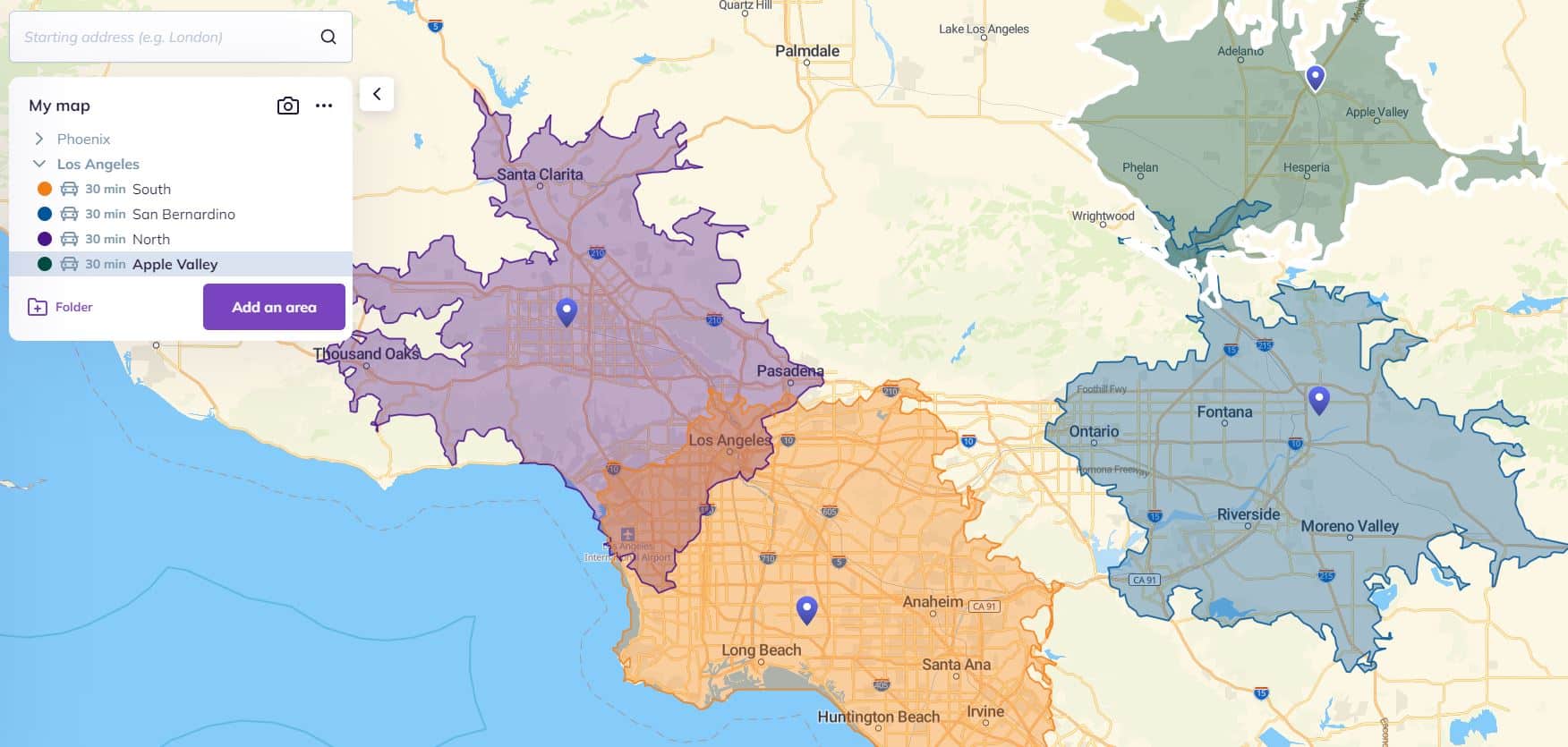“Where to draw the line?” This is not just a philosophical question but a pivotal one for franchisors.
The question is often: how to define my territories?
But have you ever asked yourself: when?
In the dynamic landscape of franchising, knowing when and how to delineate these territories can make the difference between a flourishing franchise network and a fragmented one. In the insightful exploration that follows, we delve into three critical junctures in a franchise’s life cycle, each demanding a tailored approach to territory definition.
So, gear up to traverse the diverse terrain of franchise growth, where each choice in territory definition is a critical step in the dance of business expansion!
Seizing opportunities in the early days
Imagine a fledgling franchise, its wings just unfurling.
Here is a fact: it’s difficult to avoid opportunistic expansion when you don’t yet have established locations to rely on for defining your criteria, and knowing what to look for and where.
So, in these early stages, the approach is often opportunistic – territories are carved out in response to emerging opportunities.
This strategy is particularly resonant for franchises in their infancy. Here, the map is drawn in real-time, with each new franchisee shaping the boundaries.
What you need
You need at least one successful location to be able to compare the territory proposed by your franchisee candidate and evaluate its viability.
Advantages
You don’t need to have a strong network history to define your territories. But remember it’s mainly adapted to young franchise brands that don’t have any other approaches.
Risks & disadvantages
- Navigating without a compass: when the expansion is driven by fleeting opportunities – you’re at the mercy of chance, with no clear destination in sight.
- The dilemma of oversized territories: yielding to the demands of candidates may lead to generously sized territories, which in turn leaves vast swathes of potential untapped. Imagine having a solitary franchisee in an area ripe for three or four, with business opportunities that remains just out of reach.
- The puzzle of white spaces: adopting an opportunistic growth strategy can sometimes be like trying to solve a puzzle in the dark. Without a well-thought-out plan, territories can end up fragmented and disjointed, leaving ‘white spaces’ that disrupt the continuity and cohesion of the franchise network.
Strategic expansion: the planned approach
As the franchise matures, the focus shifts to a more proactive strategy. Here, the franchisor lays out a franchise development plan.
This stage is about crafting a blueprint for growth that’s not just reactive but deeply rooted in a well-thought-out strategy. It’s a blend of ambition and pragmatism, where every franchise territory defined is a step towards building a robust and cohesive network.
This phase transcends mere expansion; it’s about weaving a tapestry of locations that complement and strengthen each other, setting the stage for a franchise network that’s not just widespread but also harmoniously interconnected.
What you need
The ability to take a step back and view one’s business and network holistically is an invaluable skill, requiring time and expertise to analyze each location. Which outlets are thriving, and which are not performing as well? What common factors do my successful locations share? Who is my target demographic? Who are my competitors? Answering these questions is essential for crafting your territories in advance, equipping you with the insights needed to build a well-thought-out and strategically sound franchise network.
Advantages
3 big advantages to this approach:
- Mastering logistics: in franchise networks, particularly in retail, the rhythm of inventory management and delivery is key. Strategically placing multiple franchisees within a geographic area isn’t just about expansion; it’s about orchestration. This approach paves the way for centralized solutions like shared storage facilities, turning logistical challenges into symphonies of efficiency.
- Time, the precious commodity: the heartbeat of effective network management lies in the wise use of time. Every gathering, from meetings to knowledge-sharing sessions, every site visit by field consultants, is an opportunity to tighten the bonds of the network. By focusing on regional management, travel becomes not a burden, but a streamlined pathway to stronger franchise relationships and heightened productivity.
- Improving profibatility leads to success: the alchemy of optimizing both logistics and time transforms into the gold of cost savings. This is where the magic happens – saving time means refining efforts, which in turn, means enhancing the profitability of every action. It’s a reminder that in the world of franchising, efficiency isn’t just a goal; it’s the essence of success.
Risks & disadvantages
No real disadvantages or risks. This is the strongest approach you could get to map your territories equally for each of your franchisees!
The art of refining franchise territories in established networks
Enter the realm of refinement and optimization, a stage where established franchises turn their focus to perfecting what already exists.
This isn’t just about expansion; it’s an art form of enhancing efficiency, bolstering market presence, and ensuring each franchise unit is a vibrant, thriving entity within the network. It’s about polishing the gems in the crown, ensuring that the entire franchise system shines brighter and reaches further.
Right? As an established brand franchise, you should always analyze.
This analysis is not just a routine check; it’s the cornerstone of a franchise’s strategic expansion. Let’s delve deeper into its core objectives:
- Blueprint for success: At the heart of this analysis is the assurance that the franchise’s concept can be replicated effectively across diverse territories. It’s about ensuring that the unique essence of your brand can be seamlessly woven into different locations, maintaining consistency while adapting to local nuances. This replication isn’t just about duplicating success; it’s about creating a tapestry of thriving outlets that resonate with the brand’s core values and appeal.
- Charting the course for future growth: Beyond replication, this analysis is instrumental in pinpointing future hotspots for deployment. It’s like being a skilled navigator charting a course through uncharted waters. By identifying potential areas and meticulously organizing the development strategy, the franchise sets itself on a path of informed and sustainable expansion.
Moreover, the development plan is more than just a strategic plan; it’s a testament to the franchise’s vision and commitment. For potential franchise candidates, it’s a beacon of trust and assurance. It showcases the depth of your strategic thinking and the enduring nature of your brand, making it an attractive proposition for those looking to invest in a franchise with a clear direction and a promising future.

A matter of timing
Crafting your development plan is akin to laying the foundation of a grand tower. It’s a crucial phase in the journey of network expansion, demanding a delicate balance in timing. Implementing this plan too early might lead to premature decisions, yet waiting too long could result in missed opportunities.
It requires a judicious approach – initiating the plan early enough to steer clear of haphazard, opportunistic growth, but also delaying it sufficiently to gather meaningful data from your existing locations.
This data forms the bedrock of reliable criteria, enabling a comprehensive and insightful analysis. In the grand scheme of franchising, this development plan is not just a strategy; it’s a visionary blueprint for a thriving, expansive network.

